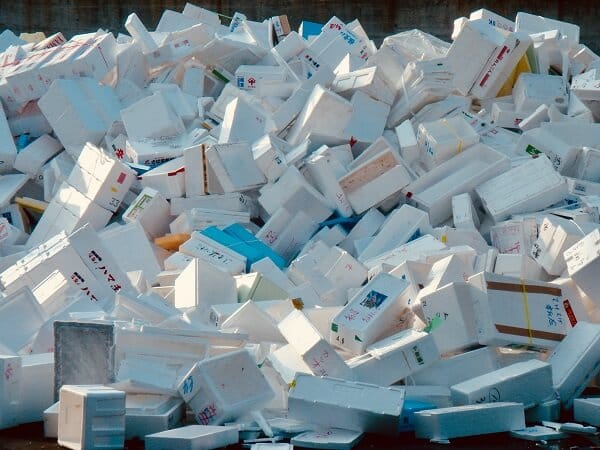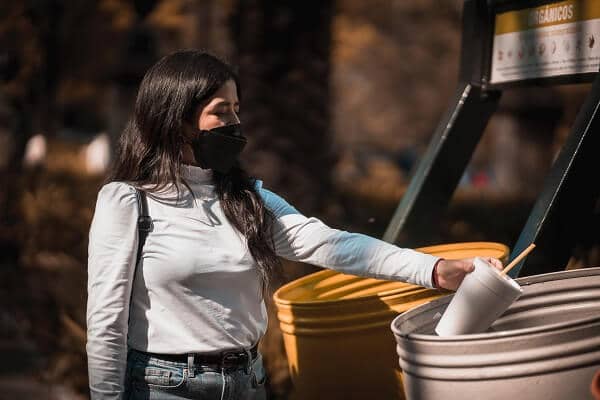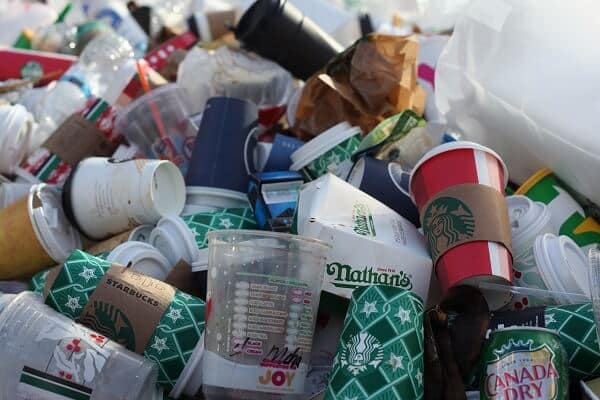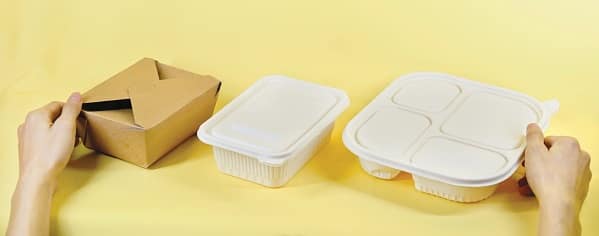Styrofoam has such a bad wrap (pun intended) because it virtually lasts forever and is difficult to recycle. In fact, most of the styrofoam ever made is still around today. So, is styrofoam recyclable?

How bad is Styrofoam for the environment?
Styrofoam, or polystyrene foam, can have negative impacts on the environment. Like other types of plastic, styrofoam is not biodegradable, which means that it can persist in the environment for hundreds of years. This can lead to the accumulation of the material in landfills, where it takes up space and can release harmful chemicals into the soil and water.
In addition, styrofoam production involves the use of fossil fuels, which contributes to greenhouse gas emissions and climate change. The production process also generates harmful byproducts such as styrene, a chemical classified as a possible human carcinogen.
Styrofoam is also a major source of litter, as it breaks down into small pieces that can be easily blown away by the wind. These small pieces of foam can end up in waterways and oceans, harming wildlife and ecosystems.
Overall, styrofoam can have significant negative impacts on the environment, and it is important to minimize its use and properly dispose of it when it is no longer needed.
Can I recycle styrofoam?

Expanded polystyrene (EPS), commonly known as styrofoam, doesn’t degrade or break down over time. Styrofoam is recyclable, but it is only accepted by a tiny number of recycling facilities. The best solution for recycling styrofoam is to reduce the usage
In general, it is not easy to recycle styrofoam, also known as polystyrene foam. This type of plastic is not widely accepted in recycling programs because it is difficult to recycle and often contaminates other recyclable materials. However, some recycling centers and companies do accept styrofoam for recycling, and it is possible to recycle it if it is clean and free of contaminants such as food or liquids.
One way to recycle styrofoam is to take it to a recycling center that specifically accepts it. These centers often have special equipment and processes to break down the foam and recycle it into new products.
Another option is to check with local businesses, such as packaging or shipping companies, to see if they will accept styrofoam for recycling. Some businesses may be willing to take it off your hands if it is clean and in good condition.
It is also possible to recycle styrofoam by sending it to a company that specializes in recycling the material. These companies often have their own processes for breaking down the foam and recycling it into new products.
Overall, it is important to check with your local recycling center or community resources to find out the best way to recycle styrofoam in your area.

How can styrofoam be recycled?
Styrofoam recycling is a process by which polystyrene foam, also known as styrofoam, is collected and recycled into new products. The process begins when styrofoam is collected and brought to a recycling center or facility.
At the recycling center, the foam is first cleaned to remove any contaminants such as food or liquids. It is then broken down into small pieces using a machine called a densifier, which compacts the foam and converts it into a dense block.
The dense block of foam is then ground into smaller pieces, which are melted and formed into pellets. These pellets can be used to make a variety of products, such as picture frames, moulding, and other products.
While styrofoam recycling is possible, it can be challenging due to the lightweight and fluffy nature of the material. It is also not widely accepted in recycling programs because it is difficult to recycle and often contaminates other recyclable materials. However, some recycling centers and companies do accept styrofoam for recycling, and it is possible to recycle it if it is clean and free of contaminants.
How can I minimize the use of styrofoam?

There are several alternatives to using styrofoam or polystyrene foam. Here are a few options to consider:
- Recyclable plastic: There are many types of plastic that are more easily recyclable than styrofoam, such as polyethylene terephthalate (PET) and high-density polyethylene (HDPE). These types of plastic can be used to make products such as containers and packaging materials.
- Biodegradable materials: There are several biodegradable materials that can be used instead of styrofoam. For example, paper, cardboard, and plant-based materials such as cornstarch and potato starch can be used to make packaging materials and food containers.
- Reusable containers: Instead of using disposable packaging materials, consider using reusable containers for food storage and transport. Glass and stainless steel containers are durable and can be used over and over again, reducing waste and environmental impact.
- Natural materials: Natural materials such as bamboo, cork, and coconut coir can be used to make a variety of products, including food containers and packaging materials. These materials are renewable and biodegradable, making them more environmentally friendly than styrofoam.
Overall, there are many alternatives to using styrofoam, and choosing wisely options can help reduce waste and protect the environment.
So is styrofoam recyclable?
It is important to always check with your municipality to see if they accept any types of styrofoam. Regardless, the best thing you can do for the environment is to try to avoid using styrofoam or things packaged in styrofoam so you can reduce our need for more styrofoam to be produced.
Pingback: The Environmental Impact of Single-Use Plastics - Ecological Crusader
Comments are closed.